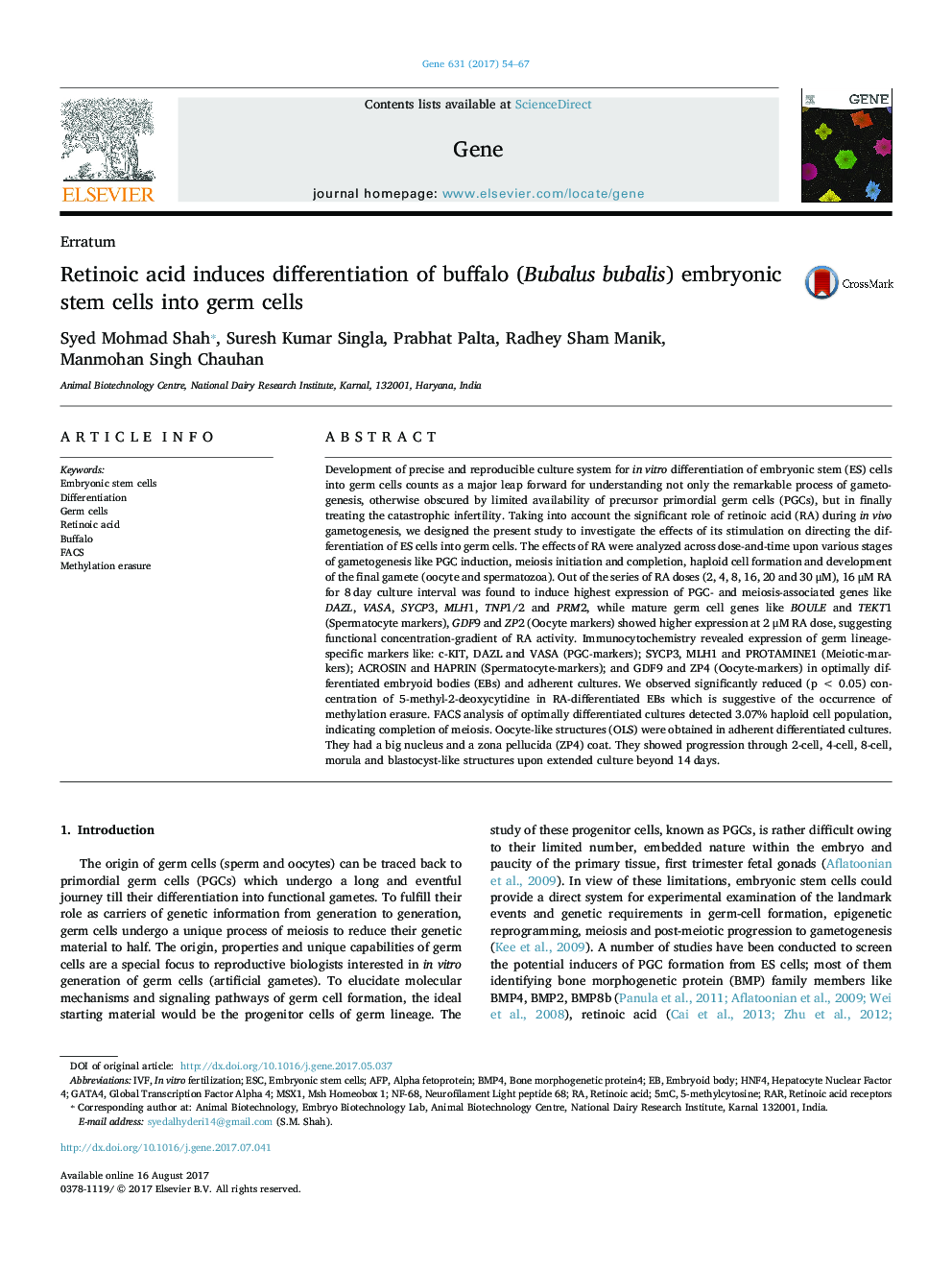| Article ID | Journal | Published Year | Pages | File Type |
|---|---|---|---|---|
| 5589542 | Gene | 2017 | 14 Pages |
Abstract
Development of precise and reproducible culture system for in vitro differentiation of embryonic stem (ES) cells into germ cells counts as a major leap forward for understanding not only the remarkable process of gametogenesis, otherwise obscured by limited availability of precursor primordial germ cells (PGCs), but in finally treating the catastrophic infertility. Taking into account the significant role of retinoic acid (RA) during in vivo gametogenesis, we designed the present study to investigate the effects of its stimulation on directing the differentiation of ES cells into germ cells. The effects of RA were analyzed across dose-and-time upon various stages of gametogenesis like PGC induction, meiosis initiation and completion, haploid cell formation and development of the final gamete (oocyte and spermatozoa). Out of the series of RA doses (2, 4, 8, 16, 20 and 30 μM), 16 μM RA for 8 day culture interval was found to induce highest expression of PGC- and meiosis-associated genes like DAZL, VASA, SYCP3, MLH1, TNP1/2 and PRM2, while mature germ cell genes like BOULE and TEKT1 (Spermatocyte markers), GDF9 and ZP2 (Oocyte markers) showed higher expression at 2 μM RA dose, suggesting functional concentration-gradient of RA activity. Immunocytochemistry revealed expression of germ lineage-specific markers like: c-KIT, DAZL and VASA (PGC-markers); SYCP3, MLH1 and PROTAMINE1 (Meiotic-markers); ACROSIN and HAPRIN (Spermatocyte-markers); and GDF9 and ZP4 (Oocyte-markers) in optimally differentiated embryoid bodies (EBs) and adherent cultures. We observed significantly reduced (p < 0.05) concentration of 5-methyl-2-deoxycytidine in RA-differentiated EBs which is suggestive of the occurrence of methylation erasure. FACS analysis of optimally differentiated cultures detected 3.07% haploid cell population, indicating completion of meiosis. Oocyte-like structures (OLS) were obtained in adherent differentiated cultures. They had a big nucleus and a zona pellucida (ZP4) coat. They showed progression through 2-cell, 4-cell, 8-cell, morula and blastocyst-like structures upon extended culture beyond 14 days.
Keywords
Related Topics
Life Sciences
Biochemistry, Genetics and Molecular Biology
Genetics
Authors
Syed Mohmad Shah, Suresh Kumar Singla, Prabhat Palta, Radhey Sham Manik, Manmohan Singh Chauhan,
